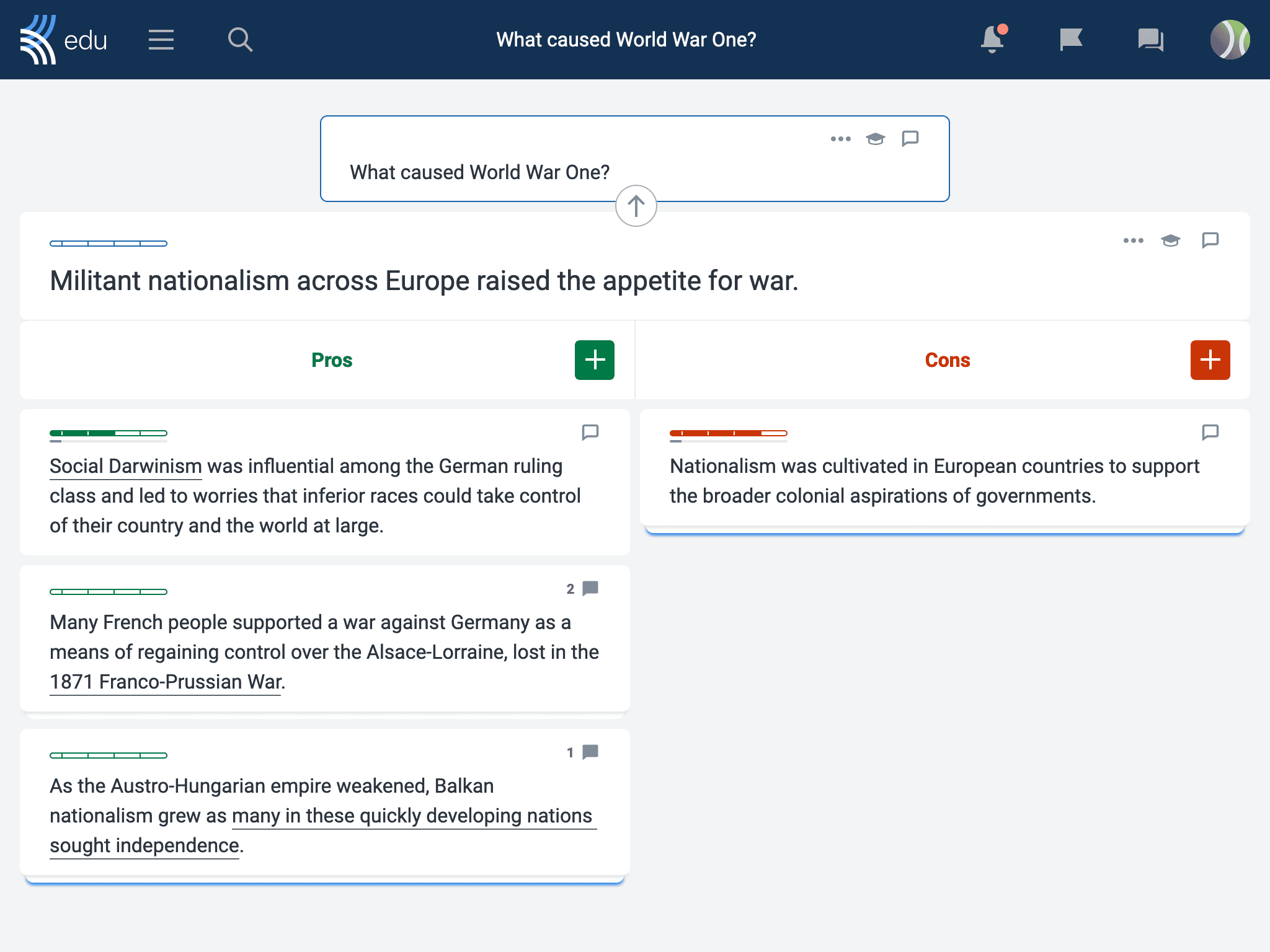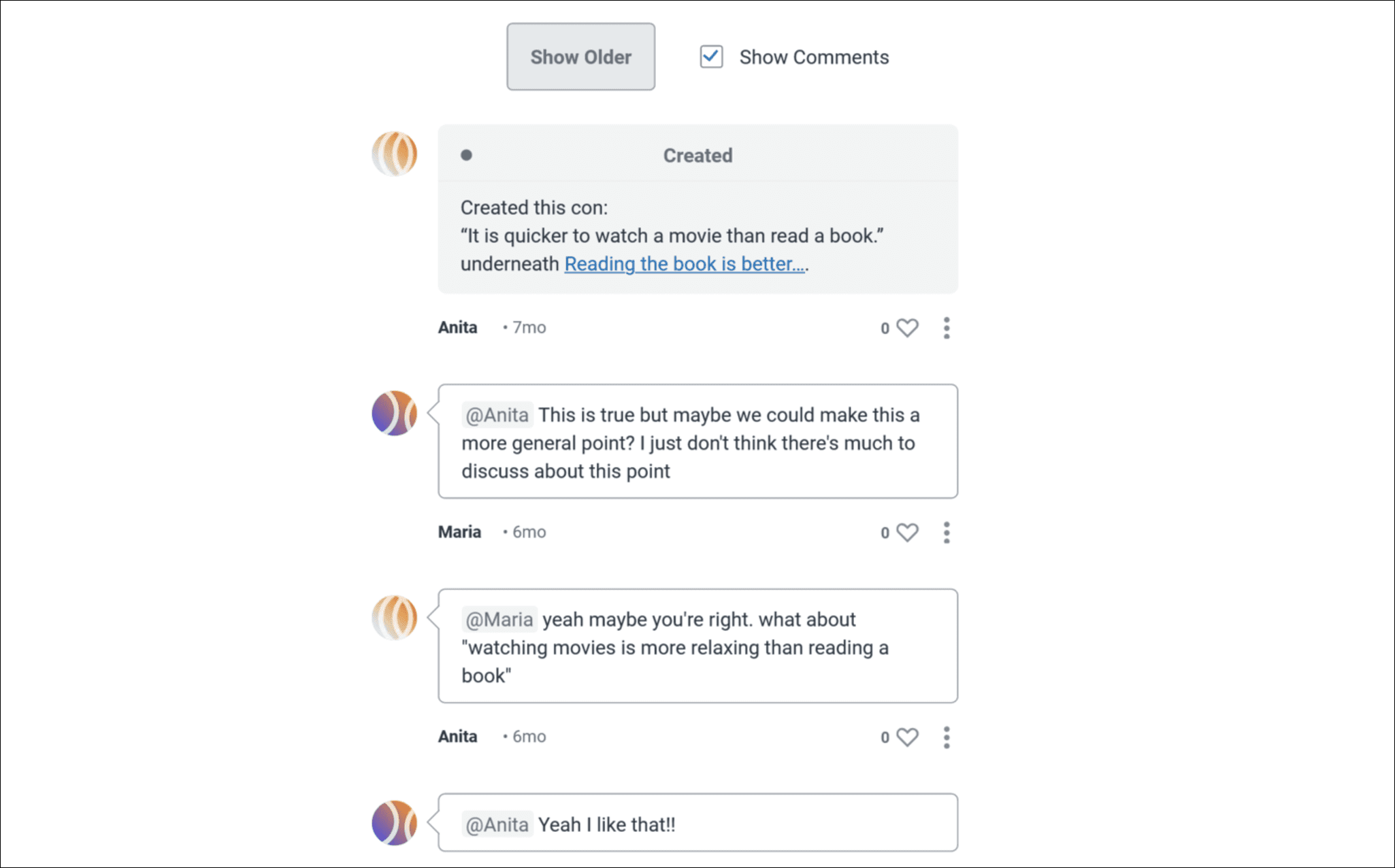“It’s in one ear and out the other!” How many times have you heard that in the staffroom? It can be frustrating, but students often appear to have forgotten everything you have taught them. To address this, Barak Rosenshine’s Principles of Instruction highlight the benefits of using daily, weekly, and monthly learning reviews to maximize outcomes for students.
With that in mind, you can use Kialo Edu to conduct effective learning reviews in your classroom! Here are some of our favorite activities for using Kialo Edu to review content with your students.
How to plan ahead for review opportunities
Educators can use Kialo Edu discussions to structure learning units around a key question. Once a unit is finished, the resulting argument map is then a ready-made resource for future learning reviews. So, no extra work is required come review time!
For example, to create a ready-made review resource, you could first introduce the review topic with a question such as “What is the best way to fight climate change?” Then, create a different thesis to answer this question for each review session. For this topic, the first session could focus on motivating individuals to live sustainable lifestyles, while the second may focus on incentivizing companies to reduce their carbon footprint.
As the unit progresses, students evidence new learning by adding claims to the argument map. They can do this individually or in teams. Or, to close a session, you can work with students to complete a whole-class map that reflects their learning. This argument map then becomes a resource for future daily, weekly, or monthly learning reviews.
Review activities on Kialo Edu

Rosenshine’s first principle advises educators to begin lessons with a daily review that helps students recall prior learning to make links with new content. Research suggests that frequent review combined with discussion and application activities can help students increase the amount of information in their long-term memory. Here are some ideas for using Kialo Edu for review in your classroom.
1. Have daily discussions to review lesson content
Educators can use Kialo Edu for in-depth debates, but why not try a “daily discussion” instead? Divide students into small teams and give each group a thesis statement, drawing content from a previous lesson or from one of our ready-made debate topics.
Then, ask teams to submit a specified number of claims using their prior learning. Educators can check claims and quickly address misconceptions before progressing to new content. Students will easily be able to recall prior knowledge thanks to regular “daily discussions”!
2. Use discussion claims as a source for daily reviews
The claims in Kialo discussions are a great resource for daily reviews. You can take a completed discussion and edit it according to your review focus.

For example, remove existing claims and ask students to recall and rewrite them into the discussion. You may choose to remove only supporting or only opposing claims so that students can use other claims as a prompt. Students will need to apply their prior knowledge to this task, spurring them to review content.
For students who need more support, provide them with the missing claims and ask them to place these correctly on the argument map. They will need to read other claims and consider the relationship between them.
Or, try editing claims so that they include incorrect information, and ask students to identify and correct these based on prior learning.
Alternatively, instead of removing the claims, remove a thesis. Students will need to reread the claims and recall their prior learning in order to rewrite the thesis.
3. Have an end-of-unit revision on Kialo Edu
At the end of a topic or unit, educators can review learning with a related Kialo discussion. For example, students could discuss the question “How did the Roman Empire become so great?” at the end of a unit on the Roman Empire. They will need to recall prior knowledge and apply it in a discussion context, helping embed learning into the long-term memory.
To gamify the review, and motivate students further, why not make this into a competitive ping-pong task? Ask students to work in pairs or teams. When one side submits a claim, the other side has to submit a supporting or opposing claim until one team cannot respond and is eliminated.
4. Ask students to become the teachers for peer teaching opportunities
You can also try activating students as learning resources for one another. This encourages meaningful dialogue between students, rather than students interacting with solely the teacher. This can even help make regular learning reviews more manageable.
Using a previously made argument map on Kialo Edu as a resource, ask students to create a summary of the topic. They can then present this to a partner, who acts as the teacher to offer feedback. To ensure students are including correct information, provide “teachers” with a checklist of correct information.
Alternatively, using a previously completed discussion, remove any feedback from it and share it with students. Students should then assess the claims in the discussion and offer feedback in the discussion comments. They could consider the accuracy of a claim, whether it supports the claim above, or whether it is linked to an appropriate source.

Asking students to comment ensures that they reflect deeply on claims, activating their prior learning. It also gives pupils ownership of the review lesson, while allowing educators to monitor that all students are contributing. Teachers can also address any further misconceptions through reviewing student comments.
So, let’s review the key points of our learning today! Kialo Edu is great for facilitating daily, weekly, and monthly reviews with students. Creating and reusing argument maps can provide a range of opportunities for students to transfer learning to long-term memory.
We would love to hear your reviews on how you’ve used Kialo Edu in your classroom! Contact us at feedback@kialo-edu.com, or via our social media!

